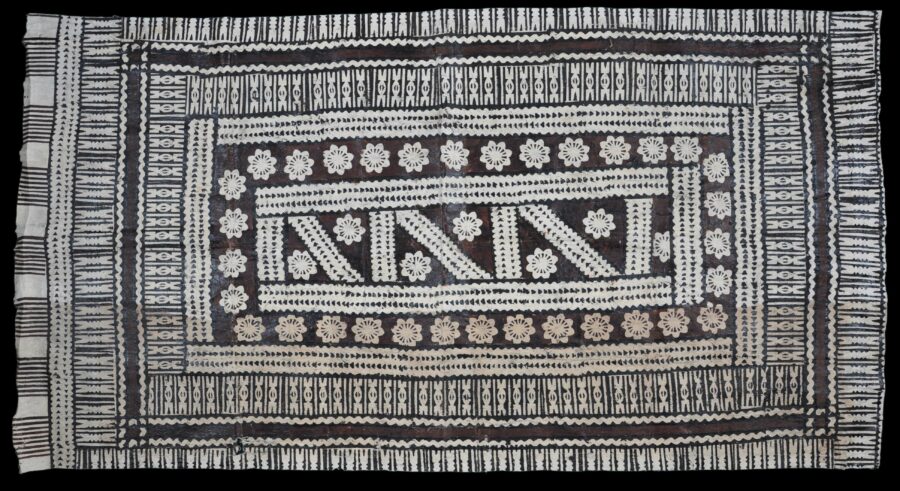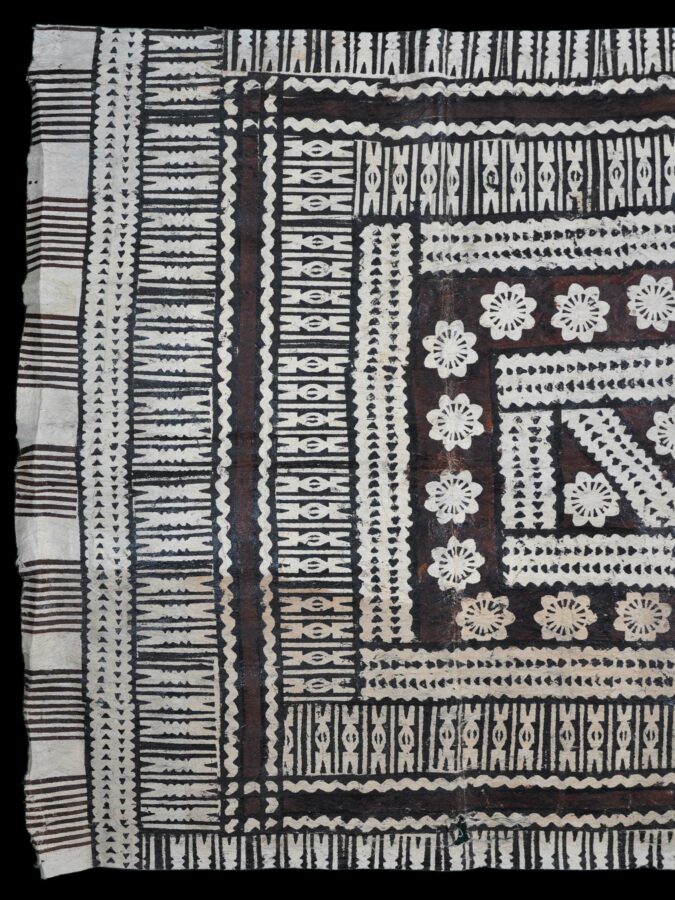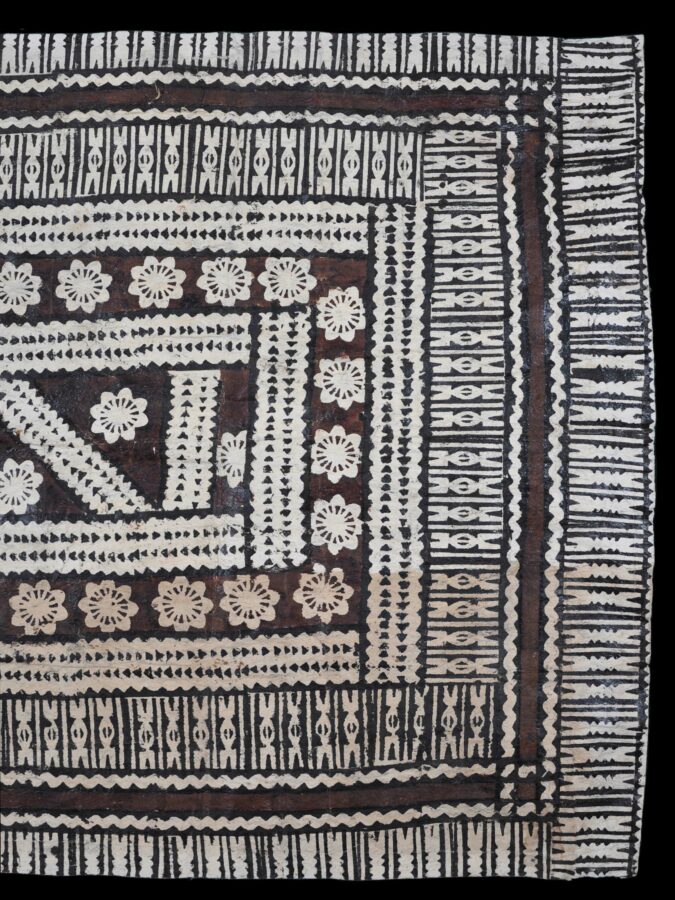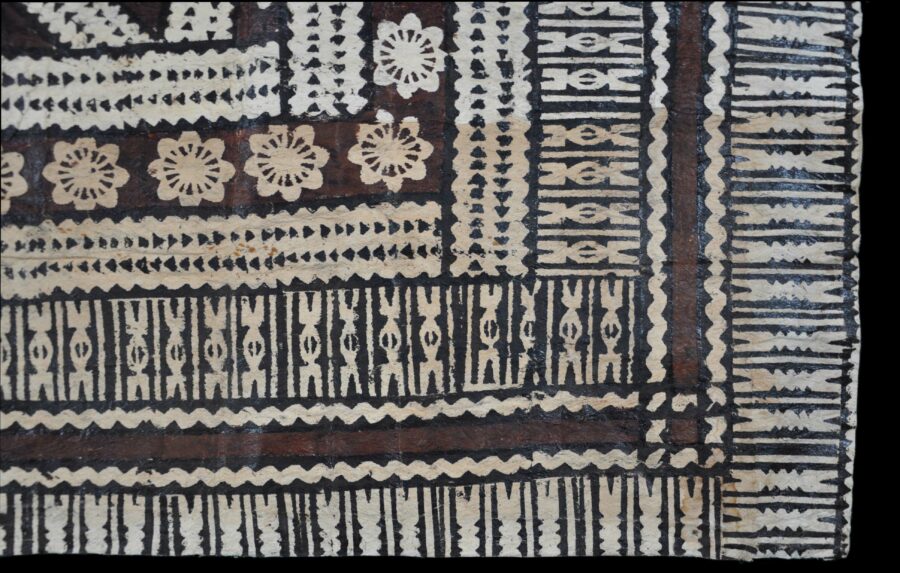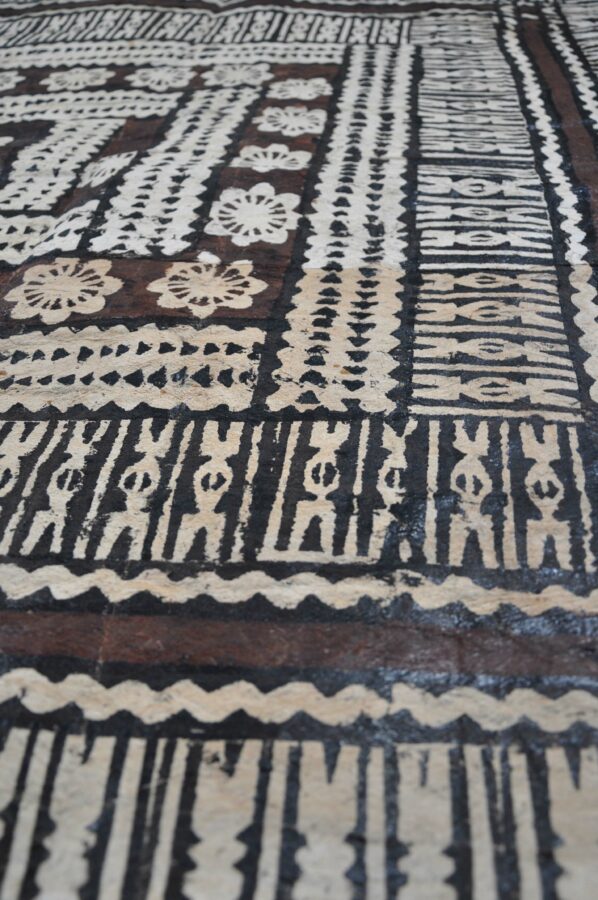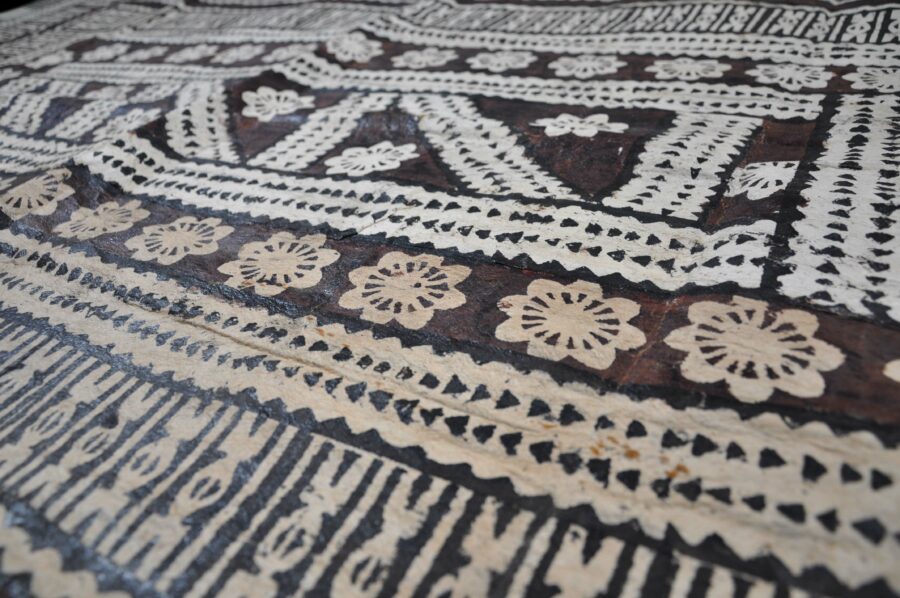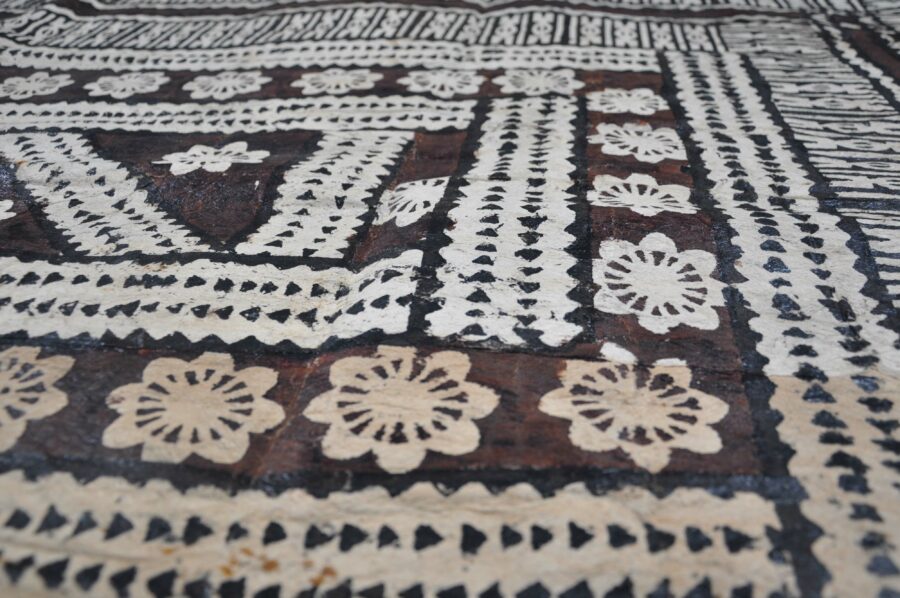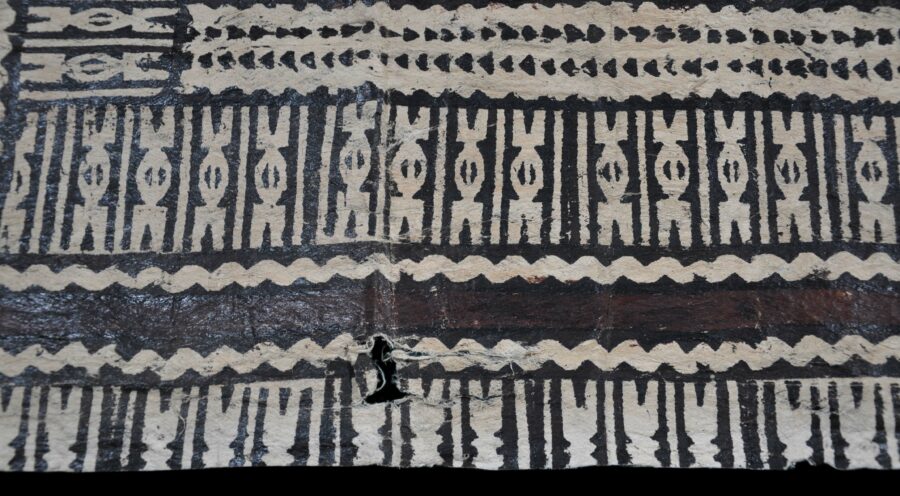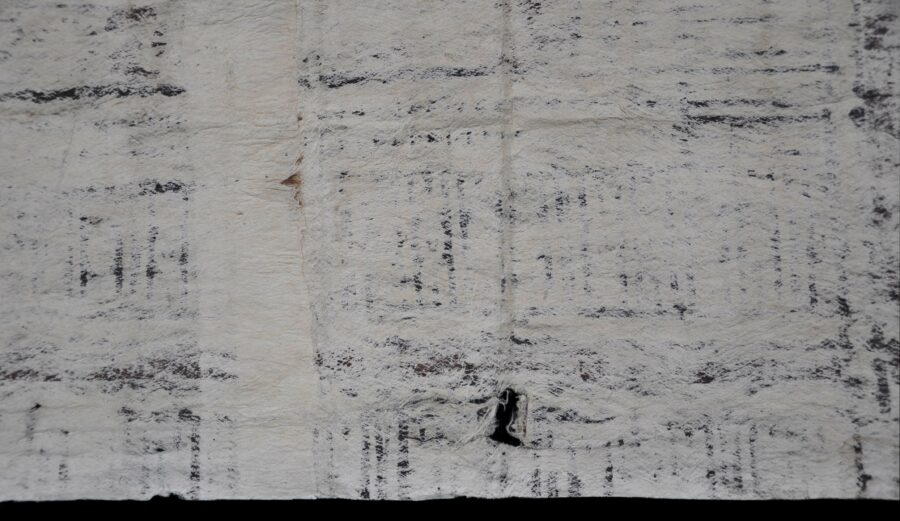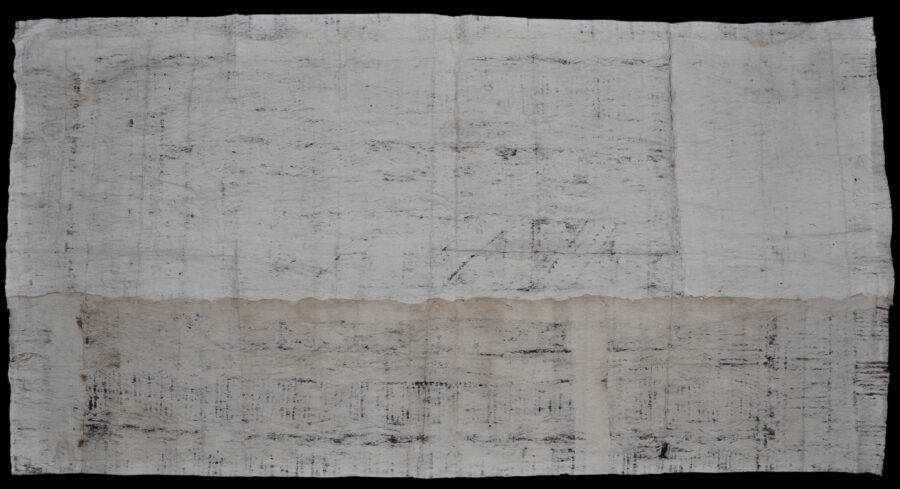Enquiry about object: 8461
Fijian Barkcloth Cloth (Masi)
Fiji 19th-20th century
length: approximately 170.5cm, width: approximately 87cm
Provenance
UK art market
This fine and good-sized cloth (masi) made from inner bark fibre is well decorated with geometric and other designs and decorated with natural and mineral dyes (kesa). (Collectively, such cloths are referred to as tapa cloths but strictly, tapa is the term used in Tahiti and the Cook Islands.)
It is decorated with bold motifs with one central rectangular field followed by a series of borders.
The cloth was made from stripped, soaked bark (mostly from the paper mulberry) that was beaten. The repeated beating of the wooden fibres softened them in the aid of producing cloth-like material. Such cloths also were presented to honour guests and visitors, including to early European visitor, and later to colonial administrators. The cloths invariably were made by women. Often the patterns were created using stencils originally made from banana leaves.
Tapa cloths served various functions, including as room dividers in Fijian homes, as well as capes and other types of clothing.
The cloth was acquired in the UK. It has been kept folded but is in near pristine condition other than for a minor tear along a fold line.
References
Herle, A. & L. Carreau, Chiefs & Governors: Art and Power in Fiji, Museum of Archaeology and Anthropology, University of Cambridge, 2013.
Hooper,. S., Fiji: Art & Life in the Pacific, Sainsbury Research Unit for the Arts of Africa, Oceania & the Americas, 2016.
Kaeppler, A. L., Polynesia: The Mark and Carolyn Blackburn Collection of Polynesian Art, University of Hawaii Press, 2010.


